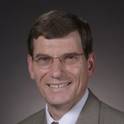
Presentation
AC and DC Studies of Non-Exponential Relaxation Processes in Superionic Conductors: Correlation of Conductivity and NMR Studies
Materials Science and Engineering Conference Papers, Posters and Presentations
Document Type
Conference Proceeding
Disciplines
Conference
1988 MRS Fall Meeting
Publication Date
11-1-1988
Geolocation
(42.3584308, -71.0597732)
Abstract
This paper considers the results of NMR relaxation studies of fast ion glasses in the light of variable frequency electrical conductivity measurements. We show that the low activation energy observed for relaxation processes studied at constant frequency below the temperature of the T1minimum is reproduced by the corresponding constant frequency conductivity measurements. Other characteristics of the constant frequency conductivity in this low activation energy regime, such as the unphysically low pre-exponent, match with the corresponding observations for NMR measurements. Since the activation energy observed at constant frequency in the frequency-dependent regime for conductivity depends on the characteristic departure from exponential relaxation for the conductivity process, we conclude that the NMR activation energy is likewise a simple consequence of the nonexponential character of ionic relaxation in the glass. In this case, the low activation energy attributed to processes probed by NMR relaxation is simply a misinterpretation since it is found, in the wide frequency range studies available to admittance bridge measurements, that all elements of the relaxation spectrum have essentially equal activation energies.
Copyright Owner
Materials Research Society
Copyright Date
1989
Language
en
Citation Information
C. A. Angell and Steve W. Martin. "AC and DC Studies of Non-Exponential Relaxation Processes in Superionic Conductors: Correlation of Conductivity and NMR Studies" Boston, Massachusetts(1988) Available at: http://works.bepress.com/steve_martin/48/

This conference proceeding is from MRS Proceedings 135 (1988): 73, doi:10.1557/PROC-135-73. Posted with permission.